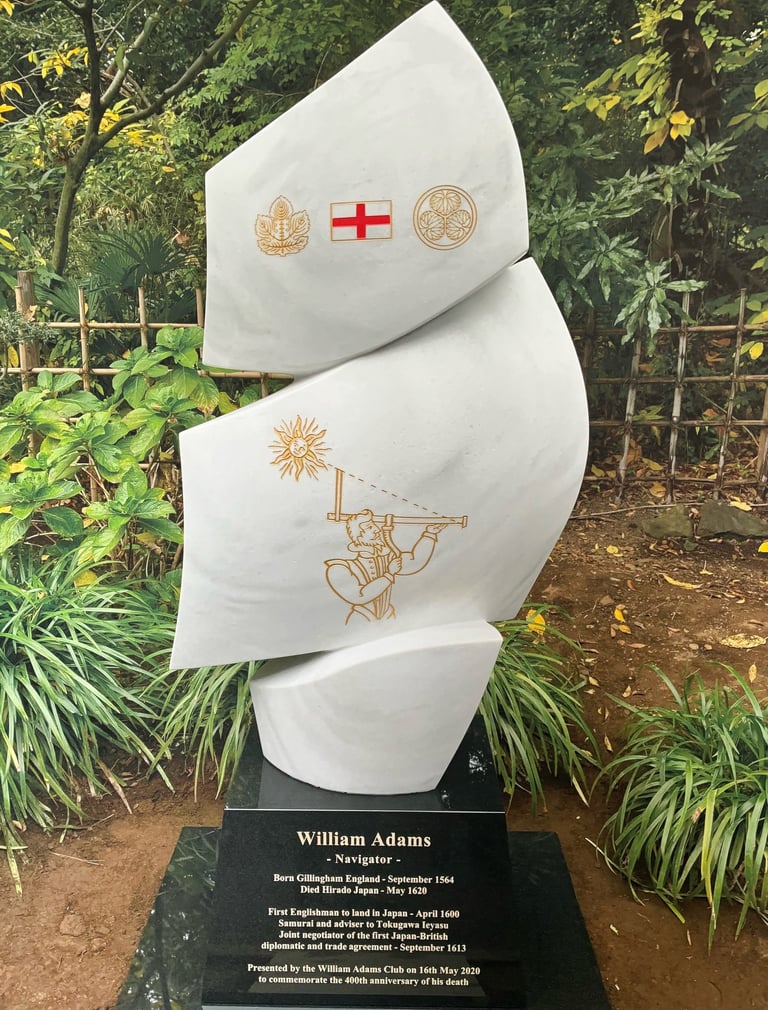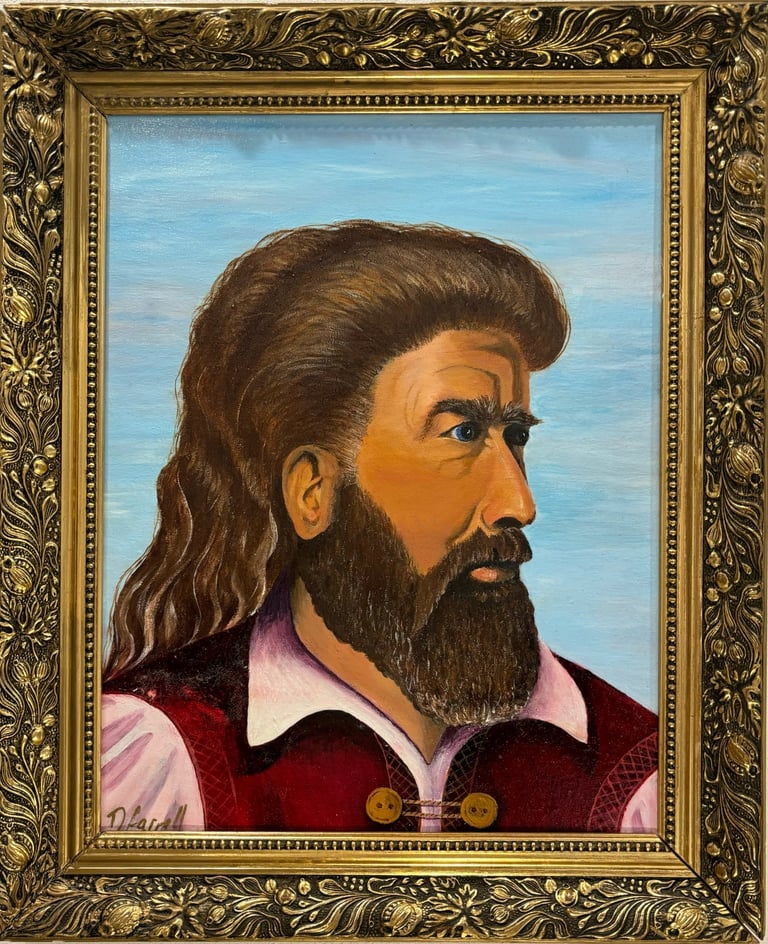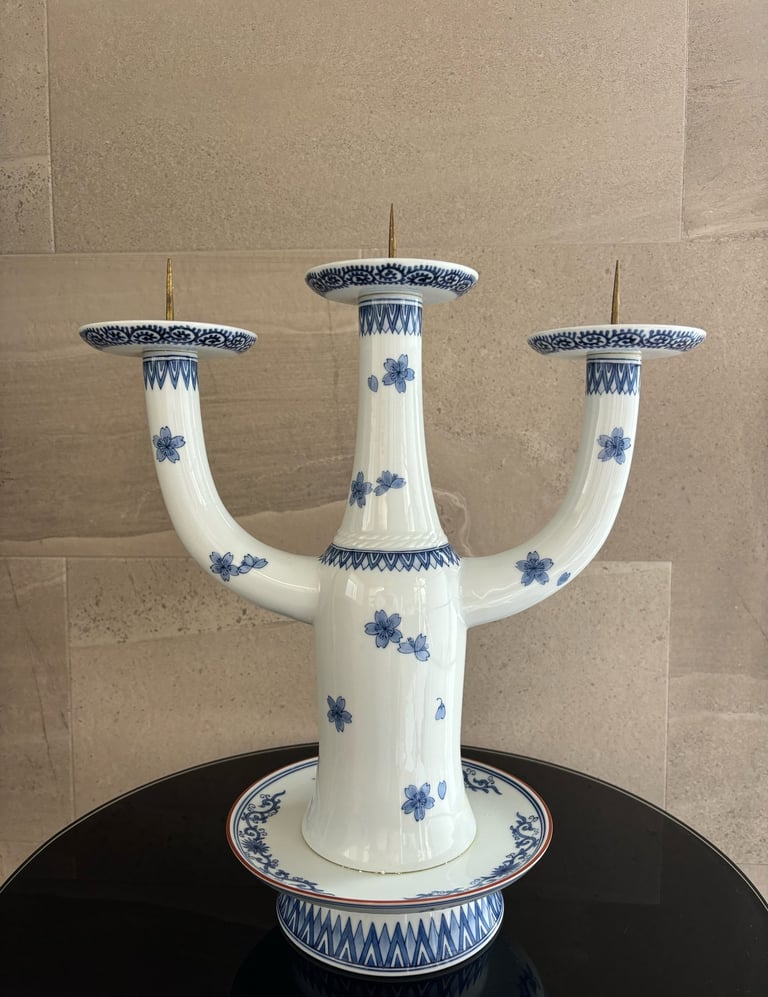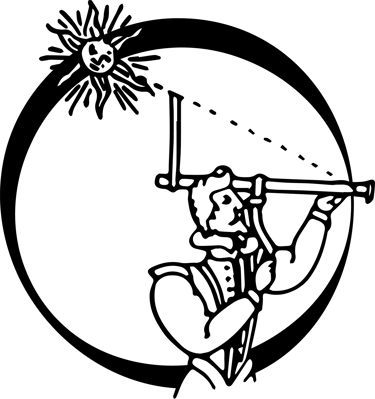The William Adams Club Artifacts
The purpose of this concise paper is to explain, in general terms, all about our artifacts which are put on display at the WAC dinners in Tokyo and London. Hopefully, this will encourage attendees to take a closer look at the details. Moreover, given that dinner attendees vary each time, this paper dispenses with the need to tediously identify and explain the artifacts at the outset of each and every event.
The collection features five items:
Large photograph of the William Adams Memorial Sculpture
Portrait of William Adams is held in Tokyo and and an exact copy in London
Two Edo Period candelabra: one features at Tokyo events and the other is held in London
THE WILLIAM ADAMS MEMORIAL SCULPTURE
This was erected in 2020 in the British Embassy Tokyo compound about 50 metres along the narrow road to your left when facing the front door of No.1 House. It is placed in the garden a little set back from the road and is about 1.8 metres high.
Kate Thomson was commissioned to undertake the project, choosing a period ship under sail using imported white marble. WAC and Kate agreed on gold for the lettering, whilst the wording and symbolisms took WAC quite a while to decide and perfect.
On the topsail from right to left is the personal crest of Tokugawa Ieyasu (Tokugawa crests often vary in small detail), the flag of St. George and the crest of the Matsura clan. The former is generally known and accepted as the Triple Hollyhock, but I understand that actually it is Wild Ginger (Asarum). Matsura Akira—a WAC Patron—chose the Mulberry Leaf crest on this occasion instead of the alternative, being the ancient three white balls crest signifying the Sun, Moon and Stars. Identifying a definite crest for William Adams proved impossible, but it is known that he hoisted the flag of St. George at various places of residence. Lastly, given that the Tokugawa are senior to the Matsura, the protocol is that their crest must be to the right when viewing the sculpture from the front. Obviously, the Tokugawa and Matsura clans were chosen because they were both absolutely integral to the life and times of Adams in Japan.
The mainsail depicts a period navigator using a back-staff, being the precursor of the sextant. This is not an illustration of Adams, because there is no reliable picture or record of what he looked like. Nevertheless, what you see replicates a period drawing taken from a book entitled The Seaman's Secrets, produced by the eminent Captain John Davis, circa 1595. Adams would have used such a basic device for navigation purposes, with he and Davis doubtless knowing each other as they moved in the same small circle of pioneering mariners.
The base of the sculpture summarizes the key points:
William Adams
Navigator
Born Gillingham England—September 1564
Died Hirado Japan—May 1620
First Englishman to land in Japan—April 1600
Samurai and adviser to Tokugawa Ieyasu
Joint negotiator of the first Japan-British
diplomatic and trade agreement—September 1613
Presented by The William Adams Club on 16th May 2020*
to commemorate the 400th anniversary of his death
*Actually erected on the 25th November 2020 due to Covid
THE PORTRAIT OF WILLIAM ADAMS
As stressed above, there is no definite record of what William Adams looked like. Several images of him exist which are purely imaginary. Teaming with UK-based artist Nicky Farrell (the sister of WAC Committee Member Simon Farrell) WAC directed that some element of provenance could be achieved by basing WAC's own image of Adams on a verbal description of him, provided by Melchoir van Santvoort (1570-1641). Apparently, based on this description of him, a lady by the name of Dorothy Burmingham produced a facial sketch. It is that sketch which was the basis of Nicky's portrait. How and when all this happened is unknown, and it's possible that the original verbal description was written down by somebody else and fell into the hands of Ms Burmingham many decades later.
Having said all that, Adams and Santvoort knew each other well as shipmates on De Liefde and, as survivors, became friends and continued to socialize together in Japan. This is clear from Act 5 of A True and Complete Account of the Life of William Adams - The English Samurai, written by Dr. Richard Irving, who is WAC's sole Lifetime Honorary Member.
Adams was known as The Blue-eyed Samurai, hence blue eyes feature in the portrait, the original of which was donated by Nicky Farrell to WAC. This is always on display at the dinners in Tokyo, and likewise an exact copy thereof at the WAC dinners in London. The portrait has the touch of a female artist, with Adams well groomed and perhaps on his way out to dinner. During the day doubtless his hair was somewhat tousled.
Hirado is key in respect of the life and times of William Adams, and framed copies of the portrait were presented by WAC to both the mayor and the Hirado International Relations Association (HIRA). It is, therefore, pleasing to note that one of the portraits is prominently displayed at Hirado City Hall, and that HIRA's portrait is integral to their annual Adams memorial event held at the end of May. Clearly, Hirado likes and appreciates WAC's image of our hero.
THE CANDELABRAS
The unique pair of identical candelabra was gifted to the Club by Matsura Akira, who is the 41st head of the Matsura clan. He was a Founder Member and currently a Patron of WAC.
Skilled pottery developed at the Hirado fief of the Matsura clan at the very end of the 1500s in the fullness of time became known as Mikawachi Ware under the patronage of the Matsura clan.
The very brief history revolves around Toyotomi Hideyoshi (1537—1598) and his traumatic and eventually failed incursion into Korea (1592-1598), whereby operations ceased upon his demise and all soldiers were recalled to Japan. This included the Matsura who stayed with the campaign until the very end. The clan returned with some expert Korean potters and hence Mikawachi Ware which continues to this very day.
These new candelabra's have been produced in the customary blue and white porcelain, although other colours are also used to suit the subject matter.
The local potter was given a totally free hand to design, providing it was appropriate for the Edo Period (1603-1868), meaning that the result is unique to WAC. The detailing thereon is worthy of close examination and appreciation.
A poignant and memorable touch is that the potter was provided with soil from the Hirado grave of Adams to mix in with the clay.
If any clarity is needed, by all means email me: rjmaynard126@yahoo.co.uk
Robin James Maynard MBE—5th November 2024






